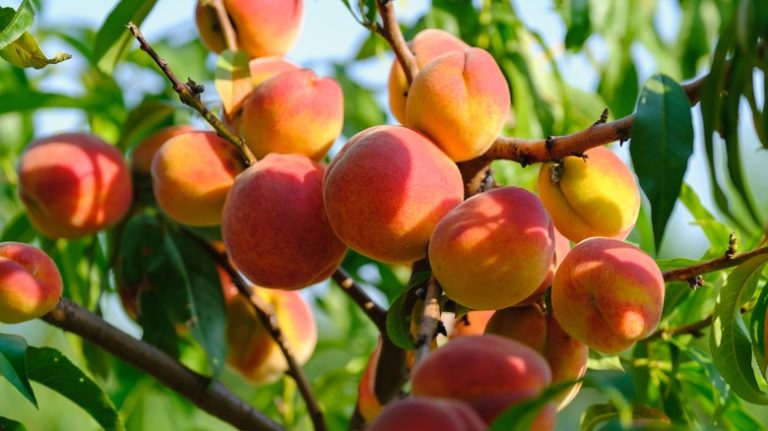Twisted Tree Farm is a unique farm located in Iowa, where they grow a variety of twisted trees. These trees, also known as hackberry or netleaf, have a distinct feature that sets them apart from other trees – their branches are twisted and bend in unusual shapes. The name “Twisted Tree Farm” perfectly captures the essence of this extraordinary place.
The twisted trees at this farm have a long history of utilization by humans. In the past, Native American tribes like the Navajo and Comanche used various parts of the tree for different purposes. For example, the flexible branches were used to make baskets and other fine crafts, while the fruit of the tree was commonly eaten as food.
Twisted Tree Farm is a real wonder in the world of farming. The trees they grow there have a range of uses, from food to craft materials.
The twisted trees at Twisted Tree Farm have adapted to thrive in their specific habitat. They can grow in both wet and dry environments and are often found in areas with thin, rocky soil. Their ability to tolerate such conditions is a testament to their resilience and adaptability.
One of the most fascinating aspects of these twisted trees is their unique growth pattern. The branches, which are harder than the rest of the tree, grow in unusual shapes. This gives the tree a distinctive appearance that stands out in the surrounding landscape. It is no wonder that the twisted trees at Twisted Tree Farm are highly sought after by collectors and enthusiasts.
If you ever visit Twisted Tree Farm, you will likely be amazed by the variety of twisted trees you will find. The farm is home to several species of hackberry, including the netleaf hackberry and the northern hackberry. Each species has its own distinctive features and characteristics.
The twisted trees at Twisted Tree Farm are a true marvel of nature. Their twisted branches and unique growth patterns make them a sight to behold.
The twisted trees at Twisted Tree Farm are not only a sight to behold but also have practical uses. The fruit of these trees has been used as food by humans for centuries. It is said to have a slightly sweet taste and can be eaten raw or cooked. The fruit is often harvested in the fall and can be stored for the winter months.
Aside from their fruit, the twisted trees at Twisted Tree Farm also provide a habitat for various insects and wildlife. The tree’s branches and leaves offer shelter and protection, while the insects, in turn, help with pollination and other ecological processes. It is a beautiful example of the interconnectedness of all living beings.
Twisted Tree Farm is not just a farm but a treasure trove of natural beauty and ecological diversity. The twisted trees serve as a home for insects and wildlife, making it a thriving ecosystem.
Twisted Tree Farm is a place where nature and human ingenuity come together. The farm provides a sanctuary for twisted trees, ensuring their growth and preservation. Whether you are a tree enthusiast, a nature lover, or simply someone looking for a unique experience, Twisted Tree Farm is definitely a place worth visiting.
If you want to support the preservation and growth of twisted trees, you can join Twisted Tree Farm’s Patreon page or simply visit the farm to learn more about these incredible trees. There is so much to discover and appreciate at Twisted Tree Farm.
Netleaf Hackberry Celtis laevigata Willd
The Netleaf Hackberry, Celtis laevigata Willd, is a species of tree that grows in a wide range of habitats, from Oklahoma to the surrounding regions of the world. This tree is highly versatile and has many uses, both for humans and for the environment.
One of the distinctive features of the Netleaf Hackberry is its hard stone fruit, which is similar in appearance to a berry. These fruits, about 1/2 inch in diameter, have a thin, paleo yellow skin and a somewhat flexible texture. Inside, there are 40-60 small, moist seeds. The fruits are often eaten by birds and other wildlife, and the seeds can be utilized by humans as well.
Although the Netleaf Hackberry fruits have a somewhat bitter taste when eaten raw, they can be prepared in various ways to make them more palatable. Some people choose to boil the fruits and strain them to make a juice, while others grind them in a mortar and pestle to create a paste. In both cases, the fruits can be used to add flavor and nutrients to a wide range of foods.
Netleaf Hackberry trees also have leaves that are very helpful. The leaves are thin and pale green in color, and they have a net-like appearance with their prominent veins. These leaves can be used for different purposes, such as making herbal teas or for decorative purposes.
In addition to their culinary and aesthetic uses, Netleaf Hackberry trees also provide valuable habitat for insects and other wildlife. The trees are often outgrowths in the surrounding biodiversity, providing a bounty of food and shelter. This makes them an important part of the ecosystem and contributes to the overall health of the environment.
In conclusion, the Netleaf Hackberry Celtis laevigata Willd is a versatile and highly useful tree species. Its stone fruits can be harvested and utilized in various ways, its leaves can be used for different purposes, and it provides valuable habitat for insects and wildlife. Whether for food, medicine, or environmental benefits, the Netleaf Hackberry plays a significant role in supporting the surrounding ecosystem.
References
Here is a list of references that were used in the research and writing of this article:
- Pennington, Michelle. “Twisted Tree Farm: A Description of the Plant and Its Fruit.”
- Yavapai-Prescott Indian Tribe. “The Twisted Tree: Witches Don’t Milk It.”
- USDA Plant Database. “Netleaf Twisted Tree (Celtis laevigata var. reticulata A. Gray)”
- Fuller, Terry. “The Nutrition of the Twisted Tree Fruit: Facts and Myths.”
- Twisted Tree Farm. “The Twisted Tree: A Nutritious Food Source for Humans and Insects Alike.”
- Stone, Dakota. “Cave Witches and Twisted Trees: Myth or Reality?”
- Oklahoma State University. “Utilizing Twisted Tree Seeds in Agriculture.”
- Iowa State University. “The Twisted Tree: A Unique Plant in the Midwest.”
Twisted Tree Farm
The Twisted Tree Farm is located in Western Iowa and is known for its unique and diverse collection of trees. The farm is surrounded by beautiful landscapes and provides a somewhat natural habitat for many species.
One of the most fascinating trees on the farm is the Hackberry tree (Celtis occidentalis). While it may not be the prettiest tree, it plays a significant role in the ecosystem. The Hackberry tree produces edible fruits that are often eaten by birds and insects. It is also a host plant for the Hackberry Emperor butterfly, which is commonly found in the area.
The Navajo Netleaf Hackberry (Celtis reticulata) is another tree found on the farm. Its thin, flexible branches and netleaf-like surface make it distinct from other trees. This tree is commonly used for its medicinal properties, as it is believed to have anti-inflammatory and analgesic effects.
The Twisted Tree Farm also has some smaller tree species, such as the Eastern Red Cedar (Juniperus virginiana) and the Eastern Redbud (Cercis canadensis). These trees add beauty to the farm and provide habitats for various birds and insects.
In the fall, the farm is a wonder to behold as the trees change color and their leaves fall. The farm also offers a harvest festival where visitors can learn about tree preparation and gather fruits, nuts, and seeds.
The farm has a rich history and has been a gathering place for Native American tribes, such as the Yavapai and Comanche. They often used the tree’s bark, leaves, and fruits for various purposes. The Hackberry tree, in particular, was prized for its nutritious and vitamin-rich fruit.
Whether you’re interested in the unique trees, the diverse wildlife, or the rich history, Twisted Tree Farm is a real gem in the heart of Western Iowa.
| Tree Name | Description |
|---|---|
| Hackberry | The Hackberry tree (Celtis occidentalis) is not the prettiest tree, but it plays a significant role in the ecosystem. Birds and insects eat its edible fruits, and it is a host plant for the Hackberry Emperor butterfly. |
| Navajo Netleaf Hackberry | The Navajo Netleaf Hackberry (Celtis reticulata) has thin, flexible branches and a netleaf-like surface. It is often used for its medicinal properties. |
| Eastern Red Cedar | The Eastern Red Cedar (Juniperus virginiana) is a small tree that adds beauty to the farm and provides habitat for birds and insects. |
| Eastern Redbud | The Eastern Redbud (Cercis canadensis) is another small tree found on the farm. It adds beauty to the farm and provides habitat for birds and insects. |
Hackberry Fruit
The Hackberry fruit is a type of fruit that is found within a range of different species. It is typically used for human consumption and produces a sweet, somewhat edible fruit. The fruit usually appears later in the fall and can be a wonder to harvest.
The Hackberry tree can be found in a variety of habitats and is known for its flexible branches and unique appearance. The leaves of the tree are often utilized in herbal remedies and have been used for centuries.
The fruit itself is round and small, about 1/4 inch in diameter. It has a stone-like texture and a brown color, which gives it its name. The berries appear in the spring and are a favorite food source for birds and insects.
The Hackberry fruit is actually quite nutritious and can be used in a range of different dishes. It can be eaten fresh, or it can be dried and ground into a powder for later use. The fruit can also be boiled and used to make jams and jellies.
In terms of its taste, the Hackberry fruit has a slightly sweet and nutty flavor. Some people compare it to a cross between a fig and a cherry. It can be enjoyed on its own or used as a topping for desserts.
The Hackberry Farm, run by Edward Pennington, is known for its bounty of Hackberry fruits. The farm is located in the heart of the Dakota cave region, where the Hackberry trees thrive in the moist and fertile soil.
If you’re interested in trying Hackberry fruit for yourself, you can join the Hackberry Farm’s Patreon page or visit their farm directly. The harvest season typically begins in the late spring and continues through the summer months.
In conclusion, the Hackberry fruit is a real gem on the Twisted Tree Farm. With its unique appearance and nutritious properties, it’s no wonder that it has become a popular fruit choice for many.


